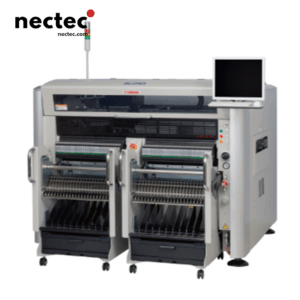In today’s fast-paced technological landscape, electronic devices have become ubiquitous—spanning from household appliances to sophisticated medical equipment. As consumer demand continues to accelerate, the efficiency and precision of electronics manufacturing have never been more crucial. One of the cornerstones of this manufacturing process is the surface mount placement machine, a pivotal innovation that has revolutionized how electronic components are assembled onto circuit boards.
Entendendo a tecnologia de montagem em superfície
Surface Mount Technology (SMT) is a method used for producing electronic circuits in which components are mounted or placed directly onto the surface of printed circuit boards (PCBs). This technology has largely replaced the traditional through-hole technology, primarily due to its ability to facilitate smaller, more compact designs and offer enhanced productivity. The core component of this technology is the surface mount placement machine, which automates the precise placement of components onto PCBs.
How Surface Mount Placement Machines Work
At the heart of a surface mount placement machine lies an intricate system that combines various technologies to achieve speed and precision. These machines typically utilize a series of feeders to load components, a vision system for alignment and verification, and a robotic arm for placement. The general workflow can be outlined as follows:
- Carregamento de componentes: The machine uses feeders that can hold multiple types of components, which can be loaded quickly and replenished easily.
- Inspeção da visão: Once the components are fed, high-resolution cameras scan their position to ensure proper alignment.
- Colocação: With the data from the vision system, a robotic arm precisely places the components onto the PCB.
- Soldagem: After placement, the board typically enters a reflow oven, where solder paste melts to secure the components.
Key Benefits of Using Advanced Surface Mount Placement Machines
As the demand for electronics grows, manufacturers face the challenges of improving output while maintaining quality. Advances in surface mount placement machines offer several beneficial features:
1. Aumento da velocidade e da eficiência
Modern SMT machines are capable of placing thousands of components per hour, significantly reducing production time. With the incorporation of advanced robotics and feeding systems, these machines can operate with minimal human intervention.
2. Precisão aprimorada
Thanks to sophisticated vision systems and precise robotic mechanics, today’s machines can place components with remarkable accuracy. This precision is crucial in preventing defects and ensuring product reliability.
3. Flexible Component Handling
Many of the latest SMT machines come equipped with flexible feeders that can accommodate a wide range of component shapes and sizes. This flexibility allows for quick changes between product runs, enhancing the machine’s versatility.
4. Real-time Data and Analytics
Modern machines are integrated with data analytics capabilities that allow manufacturers to track production statistics in real-time. This feature aids in identifying bottlenecks and optimizing the production process.
Emerging Technologies Shaping the Future of SMT Placement
The SMT industry is evolving rapidly, integrating cutting-edge technologies that promise to reshape electronics manufacturing:
1. Inteligência Artificial (IA)
AI is being utilized to enhance the capabilities of surface mount placement machines. Machine learning algorithms can analyze production data to predict failures, optimize processes, and even aid in the design of PCBs for enhanced manufacturability.
2. Integração da Indústria 4.0
The concept of Industry 4.0 revolves around the interconnection of machines, systems, and data. Surface mount placement machines are increasingly becoming part of smart factories where they communicate with other equipment and the overall manufacturing system to improve efficiency and reduce downtime.
3. Sistemas avançados de visão
Next-generation vision systems will provide machine operators with enhanced capabilities, such as 3D inspection, which can check for component height and orientation, further reducing the likelihood of errors.
Desafios enfrentados pelo setor de SMT
Despite the remarkable innovations in surface mount placement machines, challenges remain that need to be addressed:
1. Rising Component Costs
The growing complexity of components can lead to increased costs, which manufacturers must navigate while trying to keep competitive pricing.
2. Interrupções na cadeia de suprimentos
Recent events have shown that electronics supply chains can be fragile. Disruptions can delay production schedules and increase lead times for components.
3. Skilled Labor Shortages
With advancements in technology, manufacturers face a gap in skilled labor that can operate and maintain these sophisticated machines.
The Road Ahead: Preparing for Change
As the landscape of the electronics manufacturing industry continues to evolve, companies must prepare to adapt. Investing in next-generation surface mount placement machines could be a game-changer in achieving faster, more efficient production while maintaining quality. Understanding the benefits, staying ahead of technological trends, and addressing industry challenges will be key for manufacturers aiming to thrive in this competitive environment.
In conclusion (not to be included), as the capabilities of surface mount placement machines expand, they will undoubtedly play a critical role in shaping the future of electronics manufacturing. Continuous investment and innovation in this area will not only drive efficiency but also refine the quality of electronics that consumers enjoy every day.










